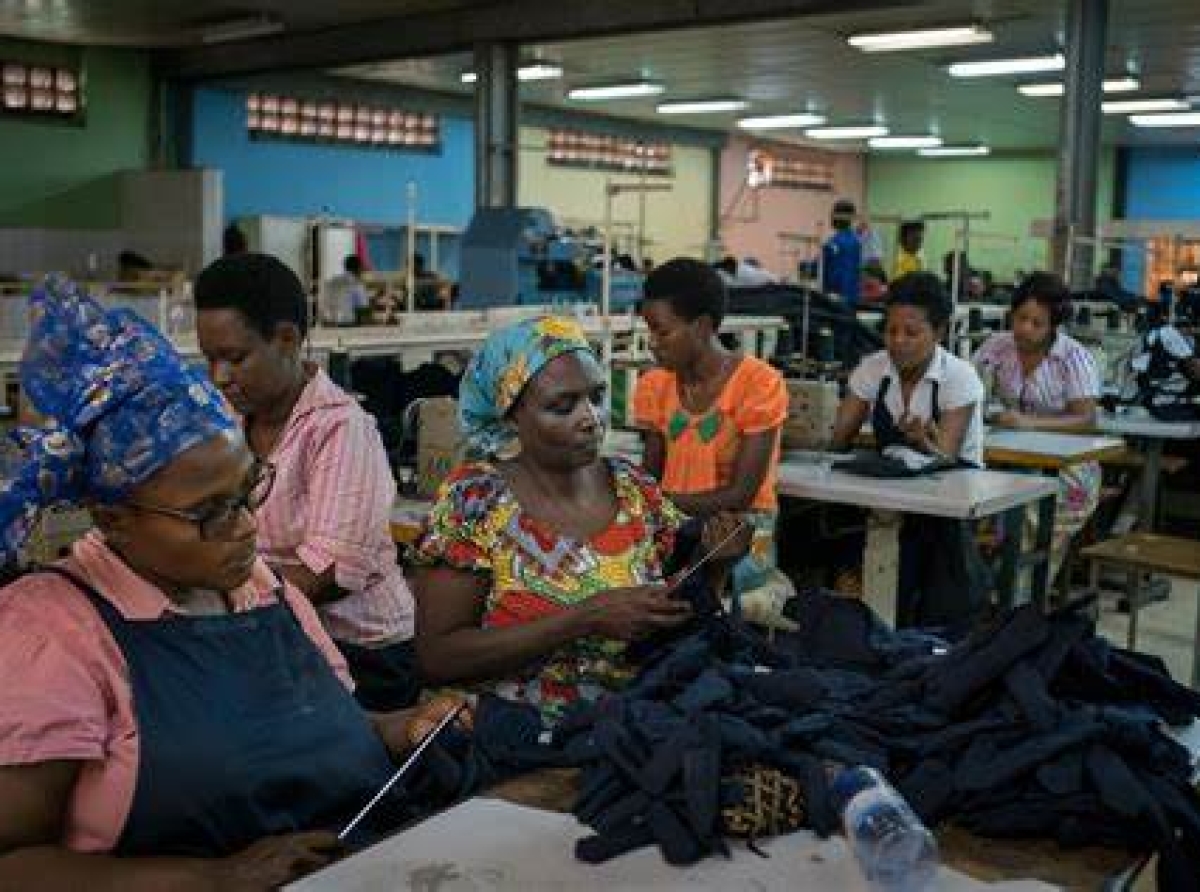16 June 2023, Mumbai
Given its wealth of natural and human resources, Sub-Saharan Africa has tremendous potential to be competitive in the manufacturing of cotton textiles and apparel.
Despite the industrial possibilities, the area is still having trouble competing on a worldwide scale.
The continent called Africa
The possibilities and difficulties faced by Sub-Saharan African nations are discussed in this article. A diversified region, Sub-Saharan Africa has a wealth of natural and human resources, and it has a great deal of potential to produce cotton competitively and achieve equitable prosperity.
In terms of generating cash and jobs, its textile and garment sector is crucial.
Conspicuous
Sub-Saharan African nations have caught the attention of textile corporations from around the world recently and have emerged as a promising locations for sourcing textiles and apparel.
Foreign investments, investor trust in the continent's manufacturing and design capabilities, and the expanding cotton industry are the main drivers of this sector's spectacular growth.
When compared to exports of $4.11 billion in 2020, the value of textiles and clothing from Sub-Saharan African nations climbed by 25% to $5.14 billion in 2021.
The devil lies in details
Statistics show that the import-to-export ratio for Sub-Saharan African nations is significantly greater. This suggests that, in contrast to other developing nations at a comparable stage of economic development, the region is unable to meet its internal demands.
A financial imbalance and a lack of economic activity in the area are indicated by the larger import-to-export ratio. Due to the low prices of imports from Asian nations like China, India, and Pakistan, the textile and clothing sectors in the Sub-Saharan African countries are experiencing escalating rivalry in the local market.
With a population of 1.14 billion and a growth rate of 2.7% annually, Sub-Saharan Africa is home to 77% of the world's under-35 population.
Positive demography
In the next 20 years, Sub-Saharan Africa will experience the greatest rate of growth in the working-age population worldwide. More than 900 million individuals in the region will be of working age by 2035, matching China's population size.
The textile and clothing industries are among those paying attention to this enormous worker pool.
The cotton business in Africa
One of the most significant cash crops in Sub-Saharan Africa, cotton plays a significant role in generating foreign exchange, reducing poverty, and creating jobs.
The fifth-largest producer of cotton in the world, Sub-Saharan Africa accounts for 7.12% of worldwide production, with about 75% of the region's output coming from West Africa.
The output of cotton in Sub-Saharan Africa has increased significantly, and it will produce more than 1.84 million tonnes of cotton in 2021.
Over 450,000 people are employed in the Sub-Saharan African region's cotton industry, which currently accounts for 15.93% of global exports.
Cotton continues to be the most popular natural fiber used in the garment industry, where demand for natural fibers is anticipated to increase.
Datapoint
According to the United States Department of Agriculture (USDA), by 2025, Sub-Saharan Africa's exports of cotton lint are expected to increase by 14%.
A growing portion of these raw material exports go to China and Southeast Asia before being transformed into finished items and marketed to customers in the US and the EU.
Sub-Saharan Africa is anticipated to be the third-largest exporter of raw cotton in 2029, according to the OECD agricultural outlook.
Enhancing Economic Ties: Kenya and the US Collaborate in the Clothing Industry
Kenya and the United States have forged a strong economic partnership with a series of new co-investments in the clothing industry, totaling $55 million.
These strategic agreements, supported by Prosper Africa and the US Agency for International Development (USAID), highlight the unwavering commitment of the US to strengthening economic ties with Kenya.
Collaborative approach
The collaboration between American and Kenyan clothing firms will yield significant benefits, including increased employment opportunities in both countries and streamlined business operations.
The US government, through the Prosper Africa program, is actively connecting US and African companies to new customers, suppliers, and investment prospects, fostering growth and prosperity.
Enduring impact
One of the key agreements involves MAS Intimates, a clothing company dedicated to enhancing the production of high-quality garments in Kenya. Through this partnership, Kenyan workers will receive education and training, leading to the creation of jobs in the formal sector.
United Garment Liquidators (UAL), a discount clothing company, plans to bolster garment exports to the US market by establishing a comprehensive facility in Kenya that integrates every phase of the production process, from "Farm to Fashion."
Mega Sports Apparel aims to expand its production capacity by incorporating new production lines.
Unfolding developments
Furthermore, Kenya's Coast Apparel will enhance its production and export capabilities through the acquisition of machinery, ultimately generating more employment opportunities, particularly for women and young people.
Best Lifestyle, situated in Athi River, plans to scale up production in Kenya and hire and train additional workers.
Nexgen Packaging, a US-based packaging company, will construct a facility in Kenya to manufacture tags and labels for clothing and footwear, catering to both domestic and international markets.
To further promote investment, a trade mission to the United States, including a roadshow in New York, has been organized, aiming to attract additional US investments in Kenya.
This mission signifies the determination of both countries to foster economic growth, strengthen bilateral relations, and unlock new opportunities in the clothing industry.
Snapshot
There are a total of six cotton basins on the African continent, with the West African basin being the most significant.
The top cotton-producing nations, Burkina Faso, Benin, Mali, and Cote d'Ivoire, have seen their volumes increase over time due to an increase in harvested area, mostly as a result of rising government subsidies.
The USDA estimates that 4,843 thousand hectares (ha) will be used to cultivate cotton across Sub-Saharan Africa in MY 2022–23.
The greatest area, 740 thousand hectares, is anticipated to be planted in Mali, an increase of 2.78 percent from 2021–2022; however, Benin and Burkina Faso are anticipated to plant over 650 thousand ha each in MY 2022–2023, an increase of 1.56% and 9.24%, respectively, from the previous year.
In reference to the context
The African Development Bank Group (AfDB) has calculated that along the cotton value chain, which includes cotton production, spinning and twisting into yarn, weaving and knitting into the fabric, followed by dyeing, printing, and design, up to 600% of value can be created.
Sub-Saharan Africa's textile sector includes a variety of micro, small, and medium-sized enterprises (MSMEs), which can quickly create jobs and support women's empowerment.
The AGOA (African Growth and Opportunity Act) Since 2000, the US has had an AGOA trade strategy with Sub-Saharan Africa. It is a non-reciprocal US trade preference policy that gives the majority of exports from qualifying African nations duty-free access to the US market.
AGOA encourages US exports and draws capital to Africa, which aids in accelerating economic growth. The AGOA's authorization was renewed through September 2025 by the Trade Preferences Extension Act of 2015. At the moment, 24 of the 36 Sub-Saharan African nations that qualify for benefits under AGOA do so for textile and clothing.
Latest Publications


































